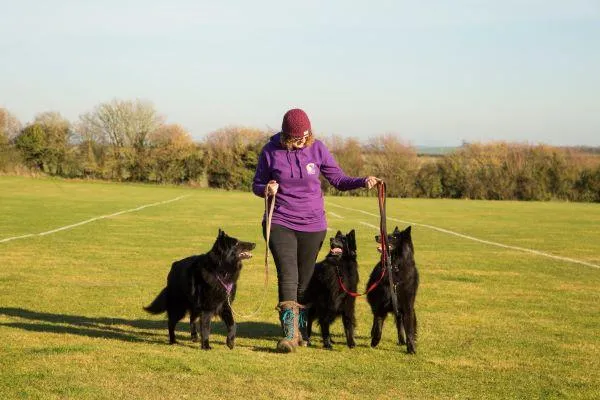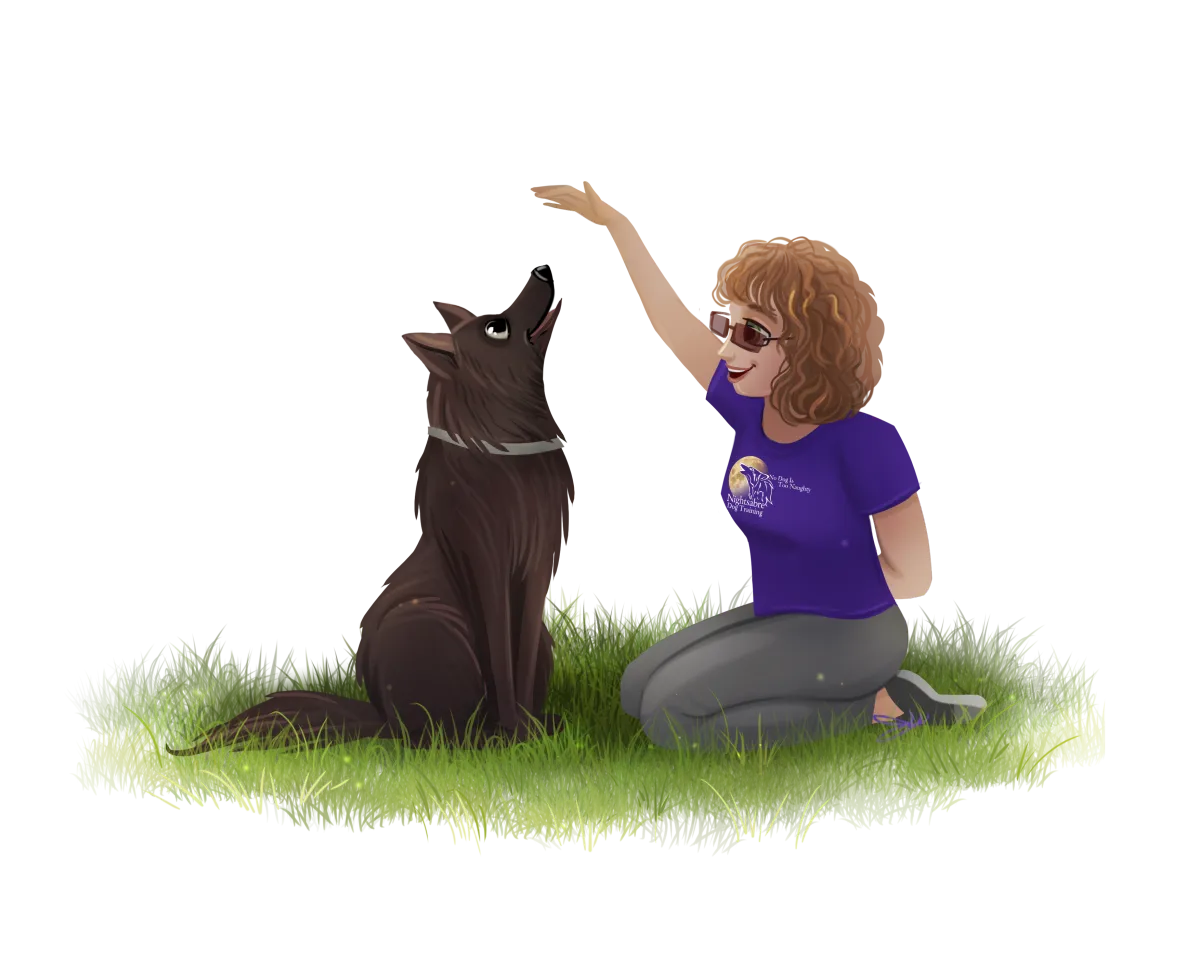The Fastest Way to Train a Dog: Positive Reinforcement Techniques for Success
Discover the fastest way to train your dog using positive reinforcement, with tips for obedience training stubborn breeds and using marker words effectively.
07888 870151

Discover the fastest way to train your dog using positive reinforcement, with tips for obedience training stubborn breeds and using marker words effectively.

“Walking your dog should be an enjoyable experience, but if your pup constantly pulls on the lead, it can turn into a frustrating struggle. ”
When I got Luna as an 8-week-old puppy, I was determined that she would learn how to walk on a loose lead right from the start. No more struggling to undo bad habits! I spent hours in our small garden teaching her to walk nicely next to me on the lead, and by the time she was 10 weeks old, she was doing great. I was confident that once she was fully vaccinated and ready for walks, she’d be a pro at loose lead walking.
Fool me! That first walk was a disaster. As soon as we turned onto the lane, she shot forward at top speed, hitting the end of the lead in half a second. Her head jerked, and she jolted to a halt as I stood there in shock. I called her back to my side, rewarded her, and tried again. The same thing happened. I quickly realized this approach wasn’t working and that I needed to rethink my game plan. One of the first changes I made was switching from a collar to a front-clip harness, ensuring there would be no jolting or choking. That experience taught me a valuable lesson—proper preparation is key, and expectations need to be adjusted for real-world environments.
Walking your dog should be an enjoyable experience, but if your pup constantly pulls on the lead, it can turn into a frustrating struggle. Many dog owners wonder: Why does my dog pull on the lead? The good news is that with proper lead training and positive reinforcement methods for lead training dogs, you can teach your pup to walk nicely on the lead. Let's dive into why dogs pull and how to fix it using proven loose lead walking techniques.
Why Do Dogs Pull on the Leash?
Dogs pull for various reasons, including:

1. Excitement & Energy – Dogs are naturally curious and excited to explore their surroundings. A walk provides new smells, sights, and experiences, making them eager to move forward quickly.
2. Opposition Reflex – When you pull back on the lead, your dog’s natural response is to pull in the opposite direction. This is an instinctive reaction, not defiance.
3. Lack of Training – Many dogs are never taught how to walk nicely on a lead. Some owners believe that simply clipping the lead on and taking their pup out is all the training needed. However, this often results in the dog pulling. Without proper guidance, dogs don’t understand what is expected of them.
4. Reinforcement of Pulling – If pulling gets them where they want to go, they’ll continue doing it. If they reach a park, greet another dog, or get treats after pulling, they learn that pulling works.
How to Stop Your Dog from Pulling: Positive Reinforcement Methods
Instead of punishing your dog for pulling, focus on rewarding good behaviour. Here are some proven effective loose lead walking techniques to teach your dog:
1. Reward for Staying Close
Whenever your dog walks beside you on a loose lead, immediately reward them with a treat and/or praise. Reinforcing this behaviour makes them more likely to repeat it. You can also use verbal markers like "Yes!" or "Good!" to help the dog understand which behaviour you liked, but remember that the marker itself is not the reward—it signals that a reward is coming. Follow up with a treat or praise to reinforce the behaviour effectively. Consistency is key—rewarding every successful step at the beginning will help establish the habit, and over time, you can gradually reduce the frequency of treats while maintaining praise and encouragement.
2. Encourage Returning to Your Side
As your dog starts to edge ahead when walking, stop and ask them to return to your side. Reward them for returning and then walk on. Don't wait until your dog is actively pulling before asking them to return to your side. Prevent pulling right from the start—if your dog never gets to practice pulling, the behaviour won't develop in the first place.
3. Change Directions Often
Randomly change direction without waiting for your dog to pull. The unpredictability will keep your dog engaged with you, as they never know what you’re going to do next. This technique encourages your dog to focus on you rather than the environment, reinforcing the idea that staying close and paying attention is rewarding. Regularly changing direction also prevents your dog from falling into a habit of pulling in one direction and encourages them to stay attentive to your movements, making walks more cooperative and engaging.

4. Train with High-Value Treats
Many owners say their dog isn't interested in treats when out and about. There are a few factors to consider: Is the dog hungry enough to want the food? Is the dog stressed in the environment? A stressed dog may not take treats. Is the dog more interested in the surroundings than the treats on offer? When selecting treats for training outside, choose something with enough value to motivate your dog to stay by your side. Sausages, cooked chicken, or cheese are great options that many dogs find irresistible. While using high-value treats is important, understanding your dog’s needs and preferences is equally crucial.
5. Use the Right Equipment
A well-fitted front-clip harness can help discourage pulling by turning the dog to face the owner rather than allowing them to pull. This also reduces strain on the owner's arms, shoulders, and back. Avoid retractable leashes, as they encourage pulling by giving the dog more freedom.
Patience and Consistency Are Key
Training takes time, so be patient. Practice lead training in low-distraction areas before progressing to busier environments. Short, frequent training sessions work best. If you stay consistent and use positive reinforcement methods for lead training dogs, your pup will learn to enjoy walking politely by your side. Start today—grab some high-value treats, a well-fitted front-clip harness, and begin reinforcing good walking habits. Your dog will thank you for it, and your walks will become more enjoyable for both of you!
By understanding why dogs pull and implementing loose lead walking techniques, you’ll transform your walks into a fun and stress-free bonding experience. If you need extra help, check out my How to Walk Your Distracted Puppy E-book for guidance on dog walks with a distracted pup. Additionally, my No Pulling Allowed book contains five powerful exercises to improve loose lead walking. You can purchase it through Amazon—[click here to get your copy].
Ready to take your training to the next level? Book a free 15 minute discovery call with me to learn more about my dog training services and how I can support you and your pup on your journey. Happy training!

Fun | Focus | Play® by Nightsabre Dog Training
Natasja Lewis DipCAPBT | 07888 870151 | [email protected]
Nightsabre Dog Training © 2023/2024/2025 . Privacy Policy